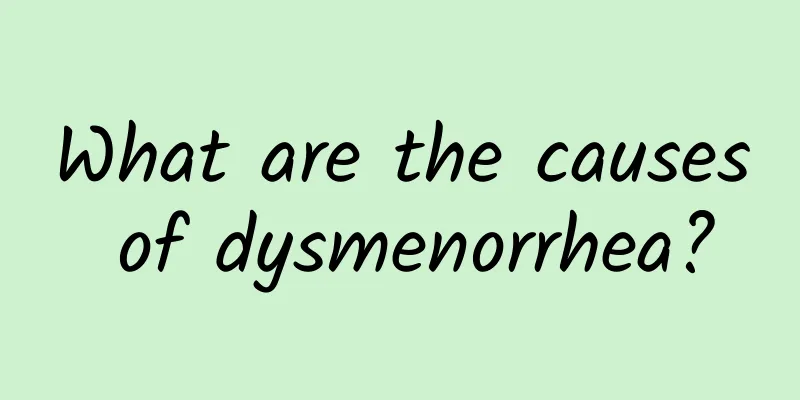Is black tea better or green tea better? Which type of tea is better?

|
I went on a business trip to the south a while ago, and a friend introduced me to a famous bubble tea chain in the south. While waiting, I saw three tea barrels inside: black tea, oolong tea, and green tea. When it comes to tea, most people are more familiar with black tea and green tea. What is oolong tea? In addition, I heard that green tea is healthier because it is not fermented. So what about black tea? Does drinking black tea have no nutrition? Today, let us take some time to learn about the basic knowledge about tea. (Situational picture/provided) Black tea, green tea, oolong tea...what are the differences? In fact, not all leaves can be used to make tea. Tea comes from a special variety of tea trees. Because its tea leaves are rich in polyphenols and other healthy ingredients, drinking tea has health benefits. The green tea, black tea or oolong tea that we are familiar with actually refers to the tea making method. For example, the tea leaves picked from the same Jinxuan tea tree can be made into Jinxuan green tea, Jinxuan oolong tea or Jinxuan black tea due to different fermentation (tea making methods). Nevertheless, because different tea trees have their most suitable tea varieties, the Jinxuan tea tree is most suitable for making green tea (Baozhong tea, oolong tea) and black tea. After being harvested, tea leaves need to go through processes such as withering, stirring (fermentation), killing the leaves, rolling, baking, and drying before they become the tea we see every day. Black tea, oolong tea, and green tea represent tea leaves with different degrees of fermentation. The fermentation of tea is judged by the degree of oxidation of catechins. If green tea is 100%, the fermentation degree of oolong tea among semi-fermented teas is about 30% (30% of catechins are oxidized during the tea making process, leaving 70%), and the fermentation degree of black tea is 80~90%, so only 10~20% of catechins remain. Therefore, if we talk about the amount of catechins, green tea has the highest content, followed by oolong tea, and black tea has the lowest content. Semi-fermented green tea has a wide range of fermentation degrees, ranging from 8% to 60%, which creates tea products with varying aromas and flavors. Except for black tea and green tea, almost most of the teas we are familiar with, such as oolong tea, Baozhong tea, Tieguanyin, high mountain tea and Oriental Beauty tea, are semi-fermented green teas. In addition to the green tea, oolong tea and black tea mentioned above, tea also includes black tea (post-fermented tea, such as Pu'er tea), white tea (semi-fermented tea, such as Baihao Yinzhen and Bai Mudan, etc.), and yellow tea (unfermented tea, such as yellow bud tea and yellow big tea). However, since white tea and yellow tea are Chinese specialty teas and are less common in Taiwan, the most commonly mentioned teas are green tea, oolong tea and black tea. (Photo courtesy of nutritionist Stella's weight loss and nutrition blog) Is drinking tea really good for your health? Tea, like all plants, contains nutrients such as vitamins, minerals, and proteins. However, because the amount of tea used at one time is very small, and it is exposed to sunlight and high temperatures and dehydrated during the tea-making process, just like coffee, the main benefit of drinking tea comes from the health benefits brought by its phytochemicals, such as polyphenols, chlorophyll, gallic acid, and caffeine. The most widely known phytochemical in tea is the catechin family in the polyphenol family. This family has multiple members, and the most famous catechin is EGCG. EGCG has multiple functions such as antioxidant, anti-inflammatory, and antibacterial. It is the most important ingredient in tea polyphenols. In addition, other important health-care ingredients in tea include fluoride, other types of catechins, γ-aminobutyric acid, etc. Although the fermentation process during tea making will destroy catechins, resulting in the lowest catechin content in black tea, this does not mean that black tea lacks antioxidant nutrients. After fermentation, catechins will be converted into theaflavins and thearubigins, which also have antioxidant properties, and the antioxidant capacity of theaflavins is not inferior to that of green tea, so both green tea and black tea have health effects. Among these three common teas, black tea is the most produced and consumed tea in the world, accounting for about 80% of the global tea production. And because of its wide inclusiveness, black tea can not only be drunk cold or hot, but can also be added with other ingredients such as lemon, milk, coffee, etc., and is suitable for drinking with foods such as jam and bread. (Situational picture/provided) In conclusion, whether it is black tea or green tea, the phytochemicals contained in tea itself and drinking more water are good for health, so drinking more tea is not a bad thing. However, it should be noted that ingredients such as caffeine and tannin in tea will affect the absorption of minerals such as iron and calcium. Therefore, if you are taking high-iron or high-calcium nutritional supplements or foods, it is best to stagger your drinking. In addition, unless you brew tea directly with tea leaves, or brew tea without any flavoring or additives, if you like to drink bubble tea shops that add sugar, creamer, pearls, coconut flakes and other ingredients, it is easy to consume too much sugar and calories while drinking tea, which will make us fat and endanger our health. Therefore, next time when you drink tea, in addition to considering whether to drink black tea or green tea, don’t forget to pay attention to whether unnecessary sugar and ingredients are added to your tea. [Common Knowledge] What is the difference between cold brew tea and hot brew tea? Traditionally, tea is brewed with high-temperature water. Studies have found that the nutrients dissolved in hot-brewed tea (soaked at 90°C for 20 minutes) are twice as much as those in cold-brewed tea (soaked at 4°C for 24 hours), and the content of the antioxidant nutrient catechins is 20% higher than that in cold-brewed tea. However, cold-brewed tea dissolves less caffeine than hot-brewed tea. In other words, if you want to reduce your caffeine intake, you can drink cold brew tea, and if you want to get the most nutrients in tea, you can drink hot brew tea. However, it should be noted that drinking high-temperature beverages frequently will increase the risk of esophageal cancer. Therefore, when drinking hot tea, it is healthier to wait until the tea soup cools down a little before drinking it. This article comes from: Nutritionist Stella's Weight Loss & Nutrition Blog ※For more information, please see "Nutritionist Stella's Weight Loss & Nutrition Blog" |
Recommend
The main causes of ovarian cysts
Benign tumors that appear in the ovaries are call...
What is the definition of menopause?
Definition of menopause: Menopause is usually the...
How to treat uterine effusion in early pregnancy? Is it physiological or pathological?
Early pregnancy uterine effusion can be divided i...
Is 45 too early for menopause?
It is not entirely certain whether menopause at t...
How much does it cost to diagnose congenital absence of vagina?
How much is the diagnosis cost of congenital abse...
How many methods are there for abortion? There are 4 treatments
In clinical treatment, there are many methods tha...
What should women pay attention to after suffering from vaginitis
Vaginitis is a common gynecological disease among...
A brief discussion on dietary considerations for patients with multiple uterine fibroids
Multiple uterine fibroids are the most common ben...
What are the diagnostic criteria for chronic pelvic inflammatory disease?
As we all know, women are a group that is prone t...
What should be paid attention to when treating vulvar leukoplakia
Vulvar leukoplakia does bring a lot of pain and i...
What are the symptoms of Bartholinitis?
Bartholinitis is an inflammation of the Bartholin...
What are the symptoms of unclean spontaneous abortion? Let's analyze them carefully.
Spontaneous abortion is common, but there may be ...
Let's talk about the causes of adnexitis
Adnexitis is a comprehensive inflammation, which ...
Prevention measures for cervical warts
With the development of society, people have beco...
What are the causes of pelvic effusion in women?
The presence of fluid in the female pelvis is a n...









